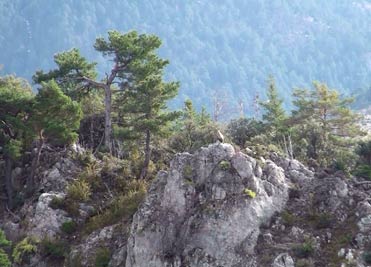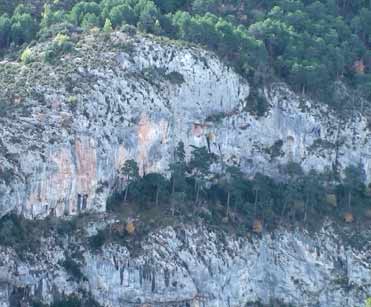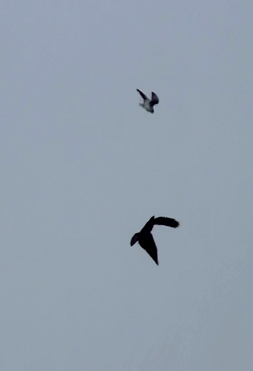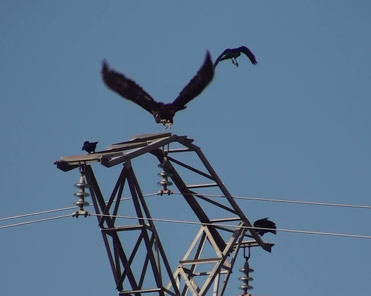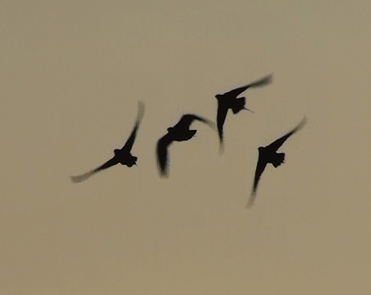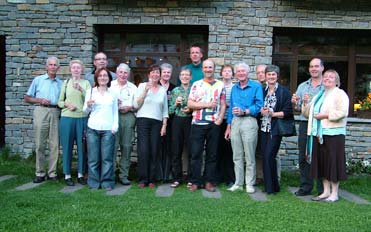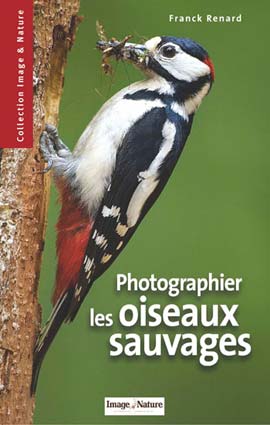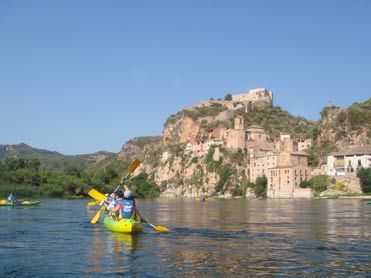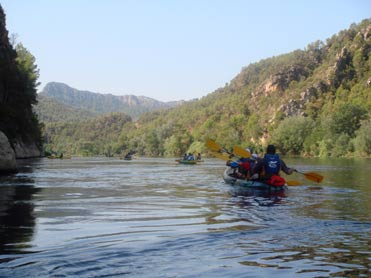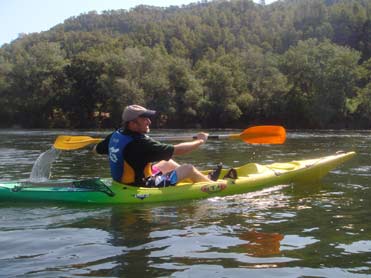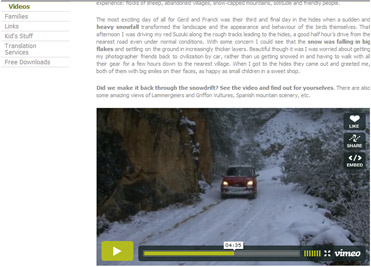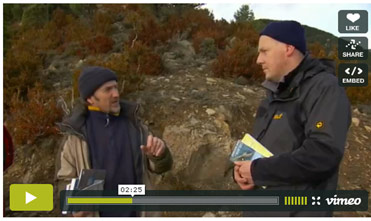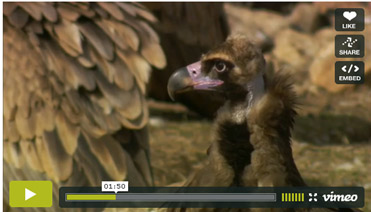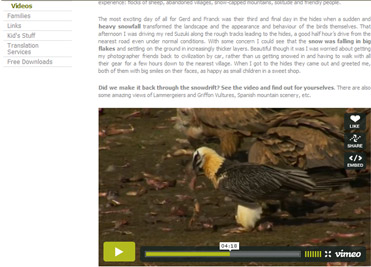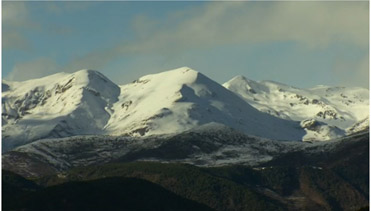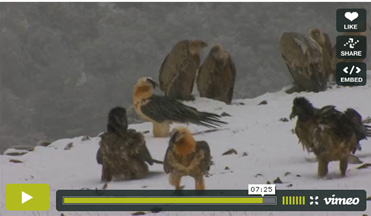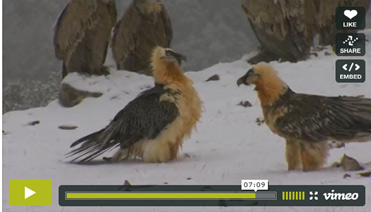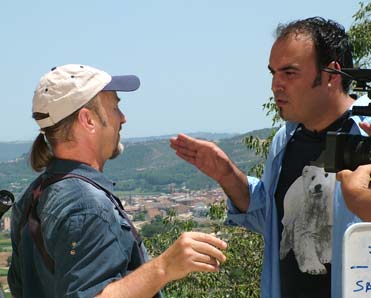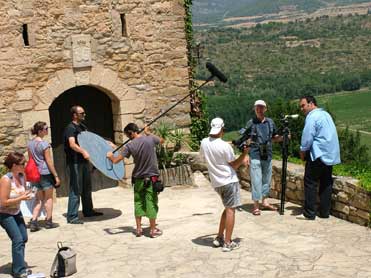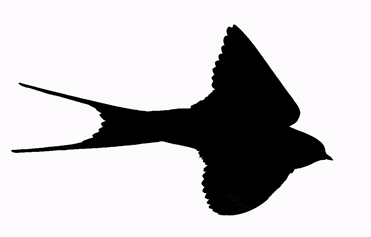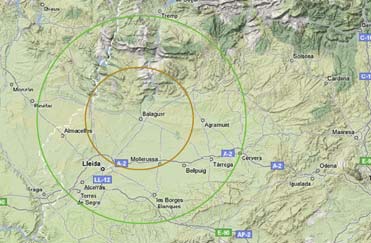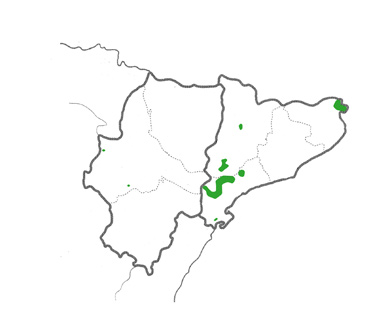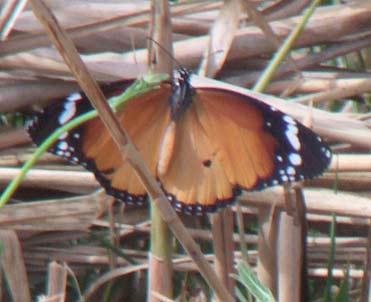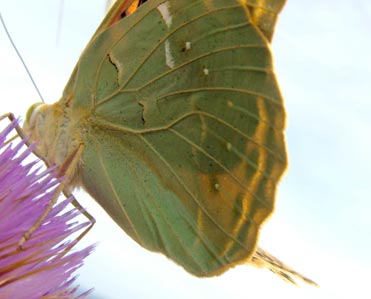Our Lammergeier hides get excellent results, but admittedly are not over spacious.
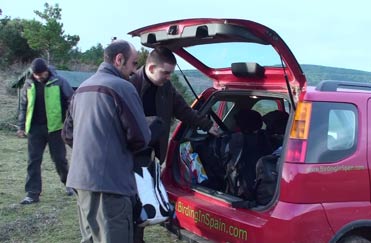
Photographers getting ready to occupy the Lammergeier hides
Photographers patiently await the arrival of Lammergeiers, Griffon Vultures or Black Vultures. Or perhaps fidget nervously in anticipation of that special shot… the Lammergeier in flight, on the ground, landing, taking off…Either way, there isn’t anywhere for them to go until the designated pick-up time. No wonder they rub and massage their creaking bones when they get out of the hides for a welcome stretch.
But a few stiff joints are worth it to get that close to the famed bone-breaking Lammergeier.
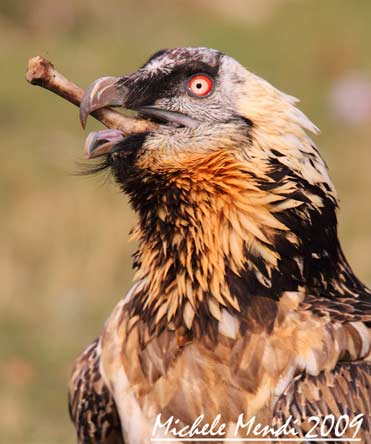
Lammergeier with bone
Michele Mendi came to us in mid-November and was very pleased with some of the photos he took. He has very generously offered to share some of them with BirdingInSpain.com and our readers, as a preview of some of his work.
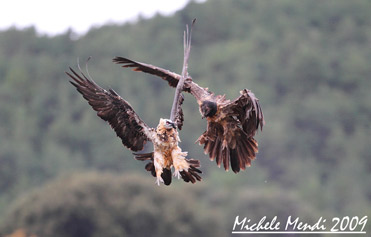
An aerial dispute
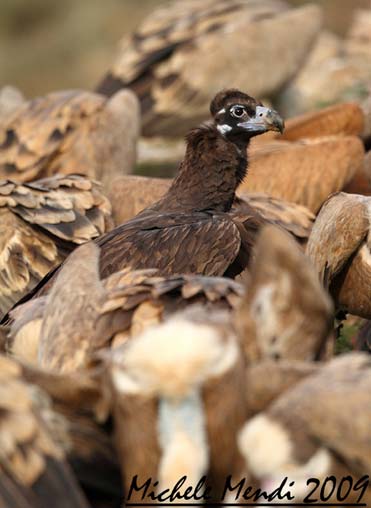
Black Vulture, or Black Sheep?
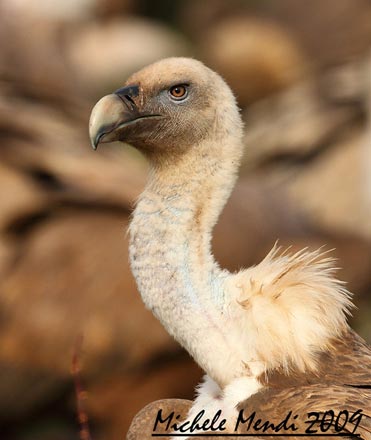
The Griffon Vulture – a handsome bird?
Many thanks, Michele! Marvellous!
Michele was not alone. Present too was Frenchman Sebastien Beghelli from Naturapics. Sebastien gained a lot of useful experience here, as well as some very good shots which we hope to see in the near future. Come on Sebastien, show us some more!
November visitors also included two of Scandinavia’s top photographers:
Tom Schandy. See some of Tom’s photos and his article here (someone translate from Norwegian please!)
Brutus Östling from Sweden. See Brutus Östling’s blog article here (English translation available).
And below a couple of the landscapes I enjoy while watching the proceedings from a distance.
